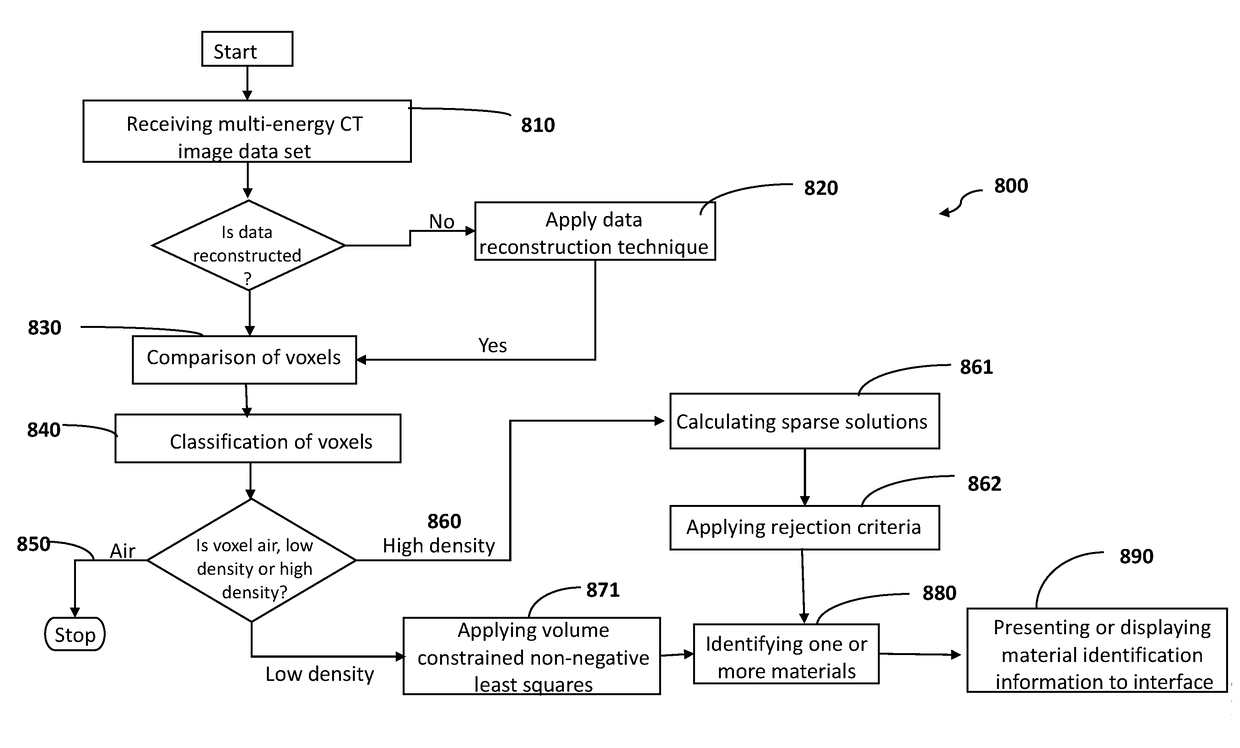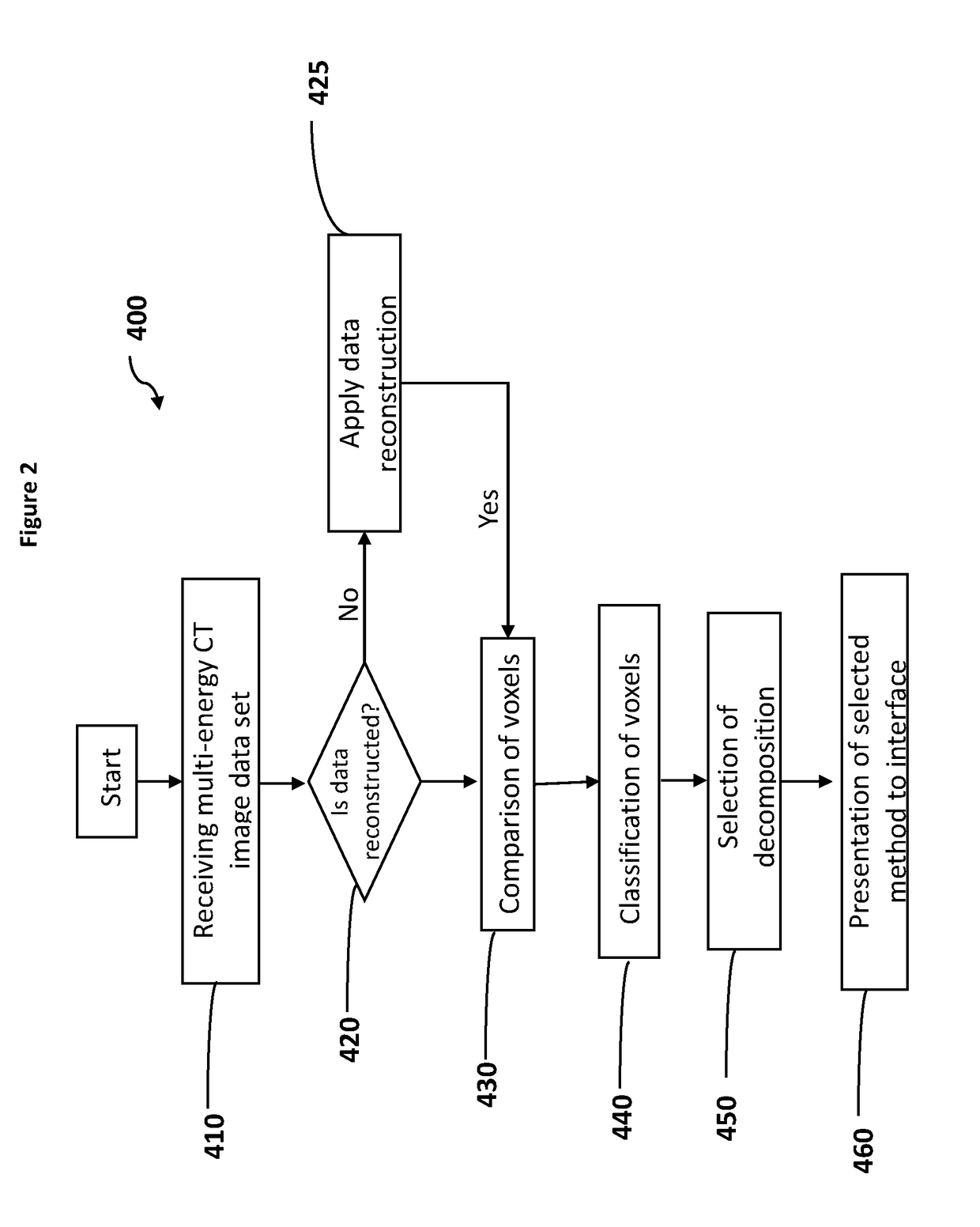Improving material identification using multi-energy ct image data
a multi-energy, image data technology, applied in image enhancement, tomography, instruments, etc., can solve the problems of numerical instability of the inversion technique used for material analysis algorithms, non-sensical detection and quantification algorithms, and achieve the effect of more effective quantification of different materials
- Summary
- Abstract
- Description
- Claims
- Application Information
AI Technical Summary
Benefits of technology
Problems solved by technology
Method used
Image
Examples
Embodiment Construction
[0305]The invention generally relates to the methods for identification and quantification of a number of different materials within an object using one or more multi-energy CT imaging devices and the image data sets produced therefrom. The invention also relates to one or more computer program products, computer systems or computer implemented methods for the identification of multiple materials within an object.
[0306]One embodiment of this invention discloses a material quantification algorithm which will be discussed below as the “MARS-MD” or “MARS-MD algorithm” or “MARS-MD program”. The purpose of this algorithm is to identify large numbers of different materials simultaneously from data collected by a multi-energy CT scanner. In summary, this is achieved by using the following three properties: solve only for sparse solutions; separate the soft tissue problem from the dense material problem; and use a combinatorial approach to allow for simple application of different constrain...
PUM
 Login to View More
Login to View More Abstract
Description
Claims
Application Information
 Login to View More
Login to View More - R&D
- Intellectual Property
- Life Sciences
- Materials
- Tech Scout
- Unparalleled Data Quality
- Higher Quality Content
- 60% Fewer Hallucinations
Browse by: Latest US Patents, China's latest patents, Technical Efficacy Thesaurus, Application Domain, Technology Topic, Popular Technical Reports.
© 2025 PatSnap. All rights reserved.Legal|Privacy policy|Modern Slavery Act Transparency Statement|Sitemap|About US| Contact US: help@patsnap.com



